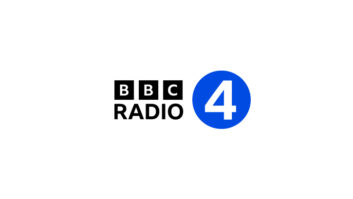Field Report: Aphex Headpod 4
Jun 1, 2012 1:00 AM, By Gil Wilson

When I first wanted to check out the Aphex Headpod 4, I was looking at it strictly from a remote broadcast engineer standpoint, especially live sportscasts. But as I was testing the unit I found the uses of this headphone amplifier could range from remote broadcasts to recording studio to even a podcaster, making it a very flexible headphone amp. It is simple in idea and takes away one of many worries when broadcasting or recording, making sure everyone hears the audio at the proper levels. Whether you’re a musician, audio engineer, broadcaster, or podcaster this unit is very handy.
WAKO radio is in a typical small town and broadcasts high school games with an announcer and color commentator who share the same audio output to feed their headphones during the broadcasts. During pregame checks I hear them discussing the headphone levels. What’s right for one is too loud or too quiet for the other. No more compromise; this unit solves that problem.
First let’s look at what is involved in the inputs and outputs of the Headpod 4. The interface is very efficient with three inputs and four headphone outputs for monitoring flexibility. The three inputs on the rear panel of the box are a balanced 1/4″ TRS left and right input (if you are using a mono input source then simply use the left input), unbalanced stereo analog 1/4″ TRS input and a coaxial S/PDIF digital input. The analog inputs are 1/4″ jack inputs, I would have liked an RCA jack analog input, but an adapter is an easy fix. The front panel has the four 1/4″ jack headphone outputs.
Performance at a glance ? High output, low crosstalk
? Master and individual volume controls
? Independent headphone outputs
? Compact, rugged metal chassis
? Analog and S/PDIF inputs
The top of the unit has the main controls with the input selector, master volume and four individual volume controls for each output. The top control also has a small LED to alert when a digital input is available, and when power is applied the Aphex logo glows a pale green.
– continued on page 2
Field Report: Aphex Headpod 4
Jun 1, 2012 1:00 AM, By Gil Wilson

Flexible uses
The Headpod 4 allows me to use one of several inputs, and it packs some power and still sounds clean. I tried several source feeds ranging from low to high levels, and it sounded great with no crosstalk.

The stated headphone impedance range is 😯 to 1kO. I tried headphones from earbuds to a broadcast headset and the unit provided a clean and loud (if needed) signal to all of them. Once the audio source was selected, I set (as per the instructions) the master volume to 12 o’clock and made or allowed others to make adjustments to each headset. The audio actually seemed to sound better through the Aphex HeadPod 4, which was likely due to the isolation between outputs instead of the shared load of our previous setup. The manual says the four stereo power amps provide a frequency response of 10Hz to 120kHz (wow) at 0.001 percent distortion.
Aphex ? 816-767-2929
? aphex.com
One other aspect that I observed was the durability of the unit. The casing is metal and feels like a small tank (not in weight, but in strength). I would never risk dropping or recommend dropping any audio device, but this one looks and feels like it could take its share of bumps and dings, which makes it the perfect addition to any remote engineer’s toolbag.
Wilson is an announcer, producer, webmaster and promotions guy at WAKO-AM/FM, Lawrenceville, IL, and an independent producer/voice talent.
June 2012
The Pick Hits of the 2012 NAB Show, new products from the 2012 NAB Show, KSBJ rebuilds, and Field Reports on the Yellowtec iXm and Aphex HeadPod 4….











